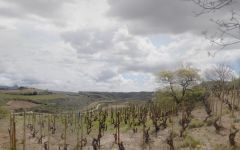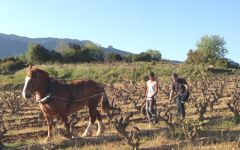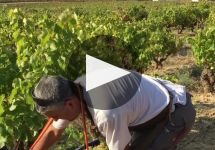Bodegas Bhilar Phinca Durmiente Rufete Blanco 2014
-
Robert
Parker



Product Details
Your Rating
Somm Note
Winemaker Notes
Sourced from White Rufete vines from the vineyards of the granitic soils of “Sierra de Francia” mountains and the slate “Sierra de Quilamas” mountains.
Professional Ratings
-
Robert Parker's Wine Advocate
The white 2014 Phinca Durmiente Rufete Blanco is truly spectacular and has a marked personality that differentiates it from the majority of whites from the region. It has low alcohol (12.5%) and very good freshness, and it's still young despite its age. But what's interesting is how it delivers an electricity that seems to come from the granite and slate soils where the vines are planted. The grapes are foot-crushed and fermented with native yeasts, and the wine matured in 500-liter French oak barrels that are rolled for the first six months. The élevage lasts for two years. 1,000 bottles were filled in August 2017. This is outstanding.








Bodegas Bhilar is a boutique winery located in Elvillar, Rioja Alavesa, run by husband and wife team, David Sampedro and Melanie Hickman. Their goal is to make terroir-driven wines with soul, respect the land, work only with indigenous grapes, and to share their unique wines with good people with positive energy.
In the year 1999, David started learning about the biodynamic philosophy and changed how he cared for his vineyards. First, he converted to organic farming and then began following tenants to recover the harmony between man, earth, vines, and cosmos. In 2014, tractors were eliminated and horses were brought back to farm the vineyards.
The winemaker and viticultor, David Sampedro Gil, grew up in the same vineyards he works today. While earning his masters in enology, David started his career working in some of the larger wineries in Rioja. There, he realized that great wines are made in the vineyard. A realization that changed his path in life, he returned to his vineyards and started new projects reflecting his personal winemaking philosophy; unique wines that reflect a sense of place, sustainable agriculture, and minimal intervention in the winery.

There are hundreds of white grape varieties grown throughout the world. Some are indigenous specialties capable of producing excellent single varietal wines. Each has its own distinct viticultural characteristics, as well as aroma and flavor profiles.

Highly regarded for distinctive and age-worthy red wines, Rioja is Spain’s most celebrated wine region. Made up of three different sub-regions of varying elevation: Rioja Alta, Rioja Alavesa and Rioja Oriental. Wines are typically a blend of fruit from all three, although specific sub-region (zonas), village (municipios) and vineyard (viñedo singular) wines can now be labeled. Rioja Alta, at the highest elevation, is considered to be the source of the brightest, most elegant fruit, while grapes from the warmer and drier Rioja Oriental produce wines with deep color and higher alcohol, which can add great body and richness to a blend.
Fresh and fruity Rioja wines labeled, Joven, (meaning young) see minimal aging before release, but more serious Rioja wines undergo multiple years in oak. Crianza and Reserva styles are aged for one year in oak, and Gran Reserva at least two, but in practice this maturation period is often quite a bit longer—up to about fifteen years.
Tempranillo provides the backbone of Rioja red wines, adding complex notes of red and black fruit, leather, toast and tobacco, while Garnacha supplies body. In smaller percentages, Graciano and Mazuelo (Carignan) often serve as “seasoning” with additional flavors and aromas. These same varieties are responsible for flavorful dry rosés.
White wines, typically balancing freshness with complexity, are made mostly from crisp, fresh Viura. Some whites are blends of Viura with aromatic Malvasia, and then barrel fermented and aged to make a more ample, richer style of white.
